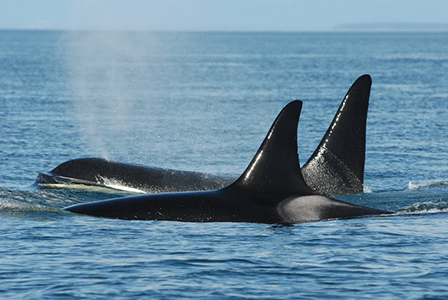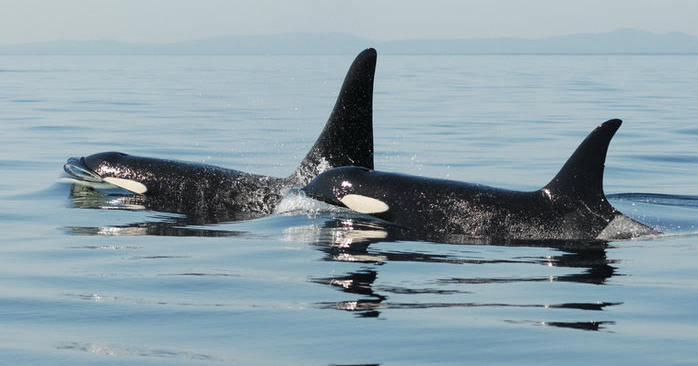A new research study by the Center for Whale Research (CWR) and the United Kingdom universities of Exeter, York, and Cambridge has shown that “providing care to weaned sons reduces female killer whales’ reproductive output.” In other words, caring for a son lessens a mother’s annual breeding success (a calf surviving to one year old) by about half!
“Our analysis demonstrates that the long-term survival benefits that Southern Resident killer whale females provide to their sons come at a significant cost to their own reproductive success,” said the Center for Whale Research’s Research Director Dr. Michael Weiss, lead author of the study, Costly lifetime maternal investment in killer whales, published in the journal Current Biology on February 8.
And this cost persists as male orcas age. The mothers pay more attention to their sons than their daughters, particularly once the females achieve adulthood. The lifelong assistance afforded their sons comes at a future price—moms dramatically reduced childbearing success.
“Our previous research has shown that sons have a higher chance of survival if their mother is around,” said Dr. Weiss. “In this study, we wanted to determine if this help comes at a price. The answer is YES. Killer whale mothers pay a high cost in terms of their future reproduction to keep their sons alive.”
Orca mothers regularly share their fish catch with their young sons and daughters, eating half and giving half to their offspring until their daughters reach reproductive age when food sharing is inclined to cease. But mom continues to feed her sons into adulthood.

The strategy uncovered in the study—mothers surrendering the majority of their future reproduction to benefit their sons across their lifespan—is unusual in nature and may even be unique. Dr. Weiss said: “The evolutionary benefit of helping their male offspring survive into maturity is that the sons will mate, passing their genes to future generations. It’s a tactic that has been effective in the animals’ evolutionary past: Mothers support their sons, so they survive to old age and produce a large number of offspring.”
But this Southern Resident orca reproduction strategy isn’t ideal for the population’s long-term survival.
“The endangered Southern Residents’ population recovery [from 73 whales] will, of course, be determined by the females in the community, by the number of females and those females’ reproductive output,” said Dr. Weiss. “A strategy of females reducing reproduction to increase male offspring longevity only works if a sufficient number of female calves are born, survive, and reproduce.”
The study used the Center for Whale Research’s ORCA SURVEY data from 1982-2021, concentrating on 40 females in the Pacific Northwest’s Southern Resident killer whale (orca) population.









